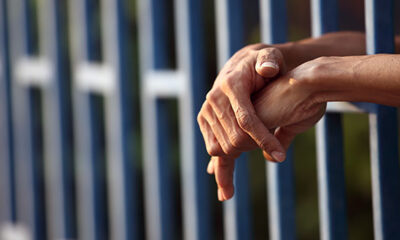Regional
Indian tunnel rescue set to take much longer after drill damaged
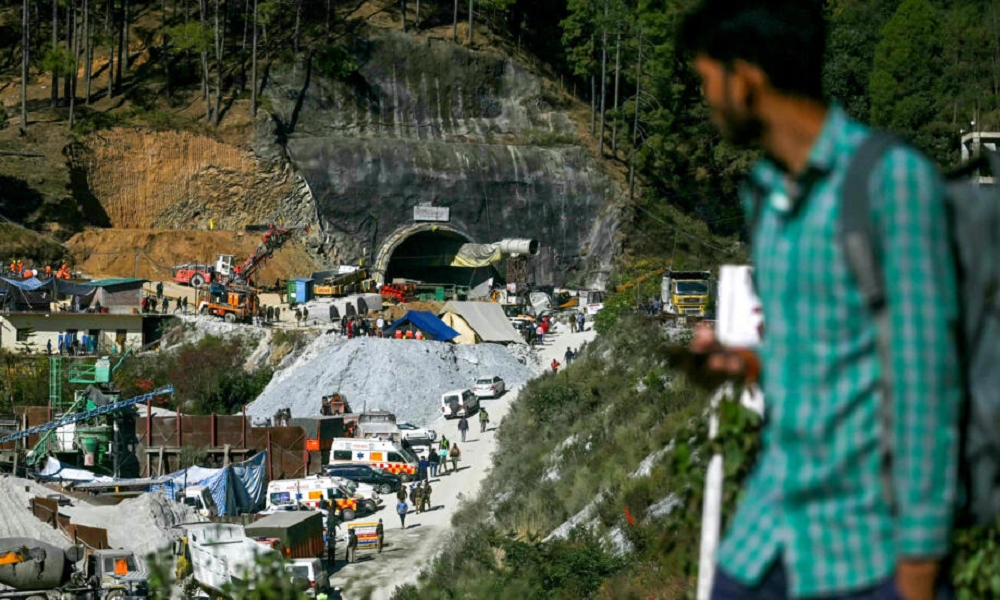
Rescuing 41 workers trapped in a highway tunnel in the Indian Himalayas for two weeks will take much longer than previously hoped as rescuers are switching to manual drilling following damage to machinery, officials said on Saturday.
The heavy drill brought in to break through nearly 60 meters of debris was damaged on Friday and was being pulled out entirely, government officials said, adding the last 10-15 meters would have to be broken with hand-held power tools.
The men, construction workers from some of India's poorest states, have been stuck in the 4.5-km tunnel being built in Uttarakhand state since it caved in early on Nov. 12. Authorities have said they are safe, with access to light, oxygen, food, water and medicines, Reuters reported.
A heavy drill machine, called an auger, which got damaged after hitting an obstacle on Friday, broke while being pulled out of the 47-meter pipe inserted to bring out the trapped workers.
Pushkar Singh Dhami, chief minister of Uttarakhand state said on Saturday the damaged drilling machine would be taken out by Sunday morning, allowing manual drilling to start.
Syed Ata Hasnain, a member of the National Disaster Management Authority which is overseeing rescue efforts, said the operation was becoming "more complex" and the process would become slower, compared to when the auger was used to drill.
"We have to strengthen our brothers stuck inside. We need to monitor their psychological state, because this operation can go on for a very long time," he said, without giving a timeline.
On Saturday morning the trapped workers, all migrants, were "very worried", said Sunita Hembrom, whose brother-in-law Birendra Kishku, 39, is in the tunnel.
"My brother in law told me that he hasn't eaten any food since yesterday. We are very worried," she said.
Authorities have not said what caused the tunnel collapse, but the region is prone to landslides, earthquakes and floods.
The tunnel did not have an emergency exit and was built through a geological fault, a member of a panel of experts investigating the disaster said on Friday on condition of anonymity as they are not authorised to speak to the media.
A rescue mission is currently underway at the Silkyara tunnel in Uttarakhand to free 41 workers who are stuck inside following a landslide.
The rescue plan involves pushing a pipe wide enough to pull the trapped men out on wheeled stretchers. Rescue workers rehearsed the evacuation by going into the pipe and being pulled out on stretchers, a video clip provided by the authorities showed.
A second plan to drill vertically from atop the hill is also being pursued and the drilling machines are being assembled, the statement said.
The men have been getting cooked food since a larger lifeline pipe was pushed through earlier this week and the statement said they were sent 200 rotis or Indian round flat bread, lentils and vegetable curry.
More than a dozen doctors, including psychiatrists, have been at the site, talking to the men and monitoring their health.
They have been advised to do light yoga exercises, walk around in the 2-km space they have been confined to, and to keep speaking to each other. Rohit Gondwal, a psychiatrist, said they were also considering sending in playing cards and board games.
The collapsed tunnel is on the Char Dham pilgrimage route, one of the most ambitious projects of Prime Minister Narendra Modi's government.
It aims to link four key Hindu pilgrimage sites with 890 km of two-lane road, at a cost of $1.5 billion.
Regional
Hamas frees hostages, Israel releases Palestinian prisoners on day one of ceasefire
The first phase of the truce took effect following a three-hour delay during which Israeli warplanes and artillery pounded the Gaza Strip.
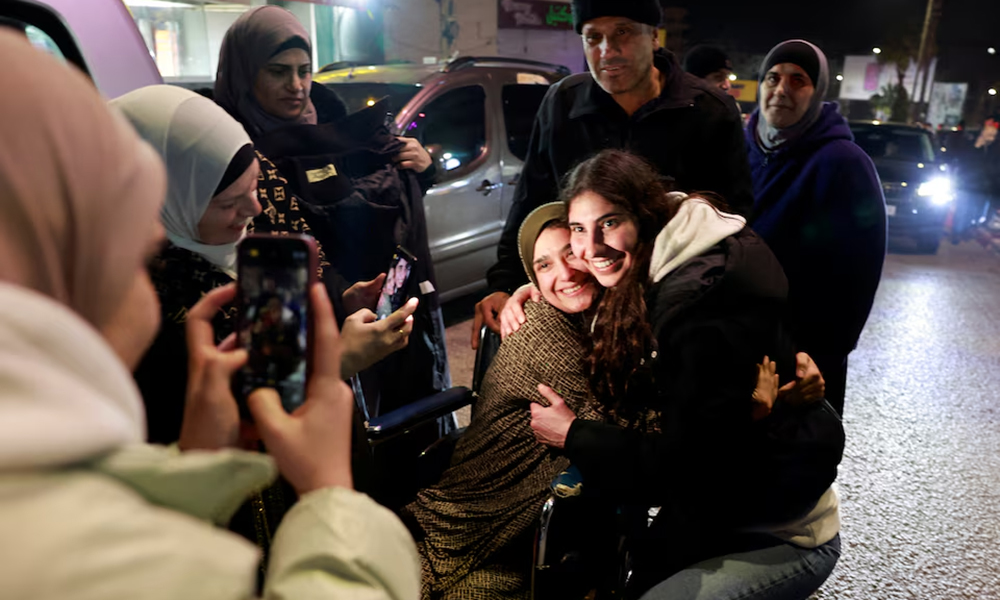
Hamas released three Israeli hostages and Israel released 90 Palestinian prisoners on Sunday, the first day of a ceasefire suspending a 15-month-old war that has devastated the Gaza Strip and inflamed the Middle East, Reuters reported.
The truce allowed Palestinians to return to bombed-out neighborhoods to begin rebuilding their lives, while relief trucks delivered much-needed aid. Elsewhere in Gaza, crowds cheered Hamas fighters who emerged from hiding.
Hamas released three Israeli hostages and Israel released 90 Palestinian prisoners on Sunday, the first day of a ceasefire suspending a 15-month-old war that has devastated the Gaza Strip and inflamed the Middle East.
The truce allowed Palestinians to return to bombed-out neighborhoods to begin rebuilding their lives, while relief trucks delivered much-needed aid. Elsewhere in Gaza, crowds cheered Hamas fighters who emerged from hiding.
The Israeli military said Romi Gonen, Doron Steinbrecher and Emily Damari had been reunited with their mothers and released a video showing them in apparent good health. Damari, who lost two fingers when she was shot the day she was abducted, smiled and embraced her mother as she held up a bandaged hand.
"I would like you to tell them: Romi, Doron and Emily – an entire nation embraces you. Welcome home," Prime Minister Benjamin Netanyahu told a commander by phone.
At Sheba Medical Center, the women were reunited with their families in long embraces that went from tears to laughter. A smiling Damari was draped in an Israeli flag. They were among more than 250 people abducted and 1,200 killed in a Hamas raid on Israel on Oct. 7, 2023, Israel has said.
More than 47,000 Palestinians have since been killed in Israeli attacks, according to medical officials in Gaza. Nearly the entire 2.3 million population of Gaza is homeless. Around 400 Israeli soldiers have also died, read the report.
The truce calls for fighting to stop, aid to be sent in to Gaza and 33 of the nearly 100 remaining Israeli and foreign hostages to go free over the six-week first phase in return for nearly 2,000 Palestinian prisoners held in Israeli jails. Many of the hostages are believed to be dead.
In the north of the Gaza Strip, Palestinians picked their way through a devastated landscape of rubble and twisted metal that had been bombed into oblivion in the war's most intense fighting.
"I feel like at last I found some water to drink after being lost in the desert for 15 months," said Aya, who said she had been displaced from her Gaza City home for more than a year.
The first phase of the truce took effect following a three-hour delay during which Israeli warplanes and artillery pounded the Gaza Strip.
That last-minute blitz killed 13 people, Palestinian health authorities said. Israel blamed Hamas for being late to deliver the names of hostages it would free, and said it had struck terrorists. Hamas said the holdup in providing the list was technical.
"Today the guns in Gaza have gone silent," U.S. President Joe Biden said on his last full day in office, welcoming a truce that had eluded U.S. diplomacy for more than a year. "We've reached this point today because of the pressure Israel built on Hamas, backed by the United States."
For Hamas, the truce provided an opportunity to emerge from the shadows after 15 months in hiding. Hamas policemen dressed in blue police uniforms swiftly deployed in some areas, and armed fighters drove through the southern city of Khan Younis, where a crowd cheered, "Greetings to Al-Qassam Brigades," the group's armed wing.
"All the resistance factions are staying in spite of Netanyahu," one fighter told Reuters.
There is no detailed plan in place to govern Gaza after the war, much less rebuild it. Any return of Hamas will test the patience of Israel, which has said it will resume fighting unless the militant group is fully dismantled, Reuters reported.
Hardline National Security Minister Itamar Ben-Gvir quit the cabinet over the ceasefire, though his party said it would not try to bring down Netanyahu's government. The other most prominent hardliner, Finance Minister Bezalel Smotrich, stayed in the government but said he would quit if the war ends without Hamas completely destroyed.
The truce took effect on the eve of Monday's inauguration of U.S. President-elect Donald Trump. Trump's national security adviser-designate, Mike Waltz, said that if Hamas reneges on the agreement, the United States would support Israel "in doing what it has to do."
"Hamas will never govern Gaza. That is completely unacceptable," he said.
The streets in shattered Gaza City were already busy with groups of people waving the Palestinian flag and filming the scenes on their mobile phones. Several carts loaded with household possessions travelled down a thoroughfare scattered with rubble and debris, read the report.
Ahmed Abu Ayham, 40, of Gaza City said that while the ceasefire may have spared lives, the losses and destruction made it no time for celebration.
"We are in pain, deep pain and it is time to hug one another and cry," he said.
Regional
Gaza ceasefire deal takes effect and fighting halts after delay
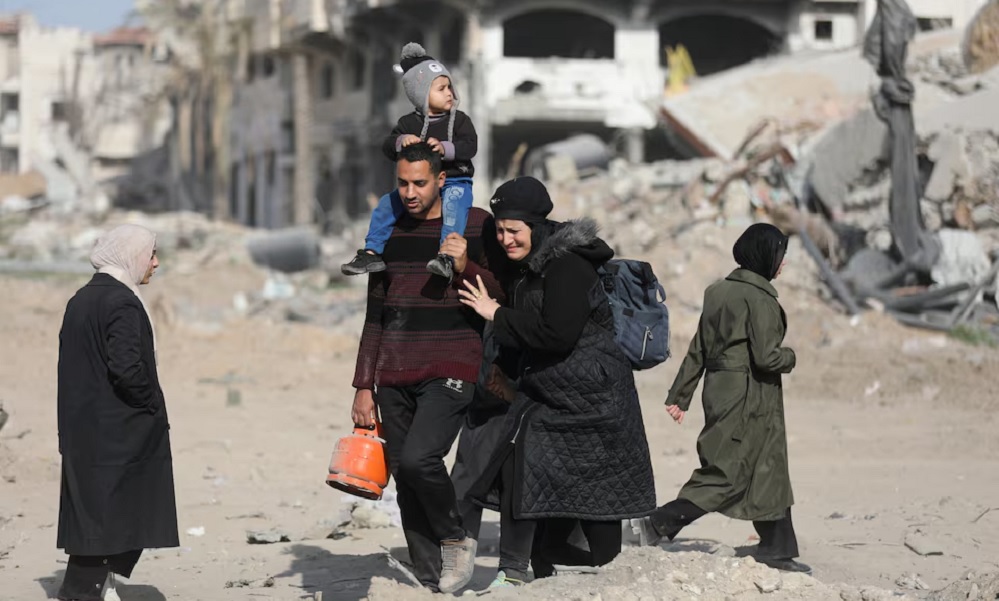
A ceasefire deal between Israel and Hamas in the Gaza Strip took effect on Sunday after a nearly three-hour delay, pausing a 15-month-old war that has brought devastation and seismic political change to the Middle East.
Residents and a medical worker in Gaza said that they had heard no new fighting or military strikes since about half an hour before it was finally implemented. Reuters reported.
Israeli airstrikes and artillery attacks killed 13 Palestinians between 0630 GMT, when the ceasefire was meant to begin, and 0915 GMT, when it actually took effect, Palestinian medics said.
Israel blamed Hamas for the delay after the Palestinian militant group failed to provide a list naming the first three hostages to be released under the deal.
Hamas attributed the delay to "technical" reasons, without specifying what those were.
A Palestinian official familiar with the matter, speaking on condition of anonymity, said the delay occurred because mediators had asked for 48 hours of "calm" before the ceasefire's implementation, but continued Israeli strikes right up until the deadline had made it difficult to send the list.
Two hours after the deadline, Hamas said it had sent the list of names, and Israeli officials confirmed receipt. Hamas named the hostages it was to release on Sunday as Romi Gonen, Doron Steinbrecher and Emily Damari.
Israel did not immediately confirm the names.
The highly anticipated ceasefire deal could help usher in an end to the Gaza war, which began after Hamas, which controls the tiny coastal territory, attacked Israel on Oct. 7, 2023, killing some 1,200 people, according to Israeli authorities.
Israel's response has reduced much of Gaza to rubble and killed nearly 47,000 Palestinians, according to Gaza-based health authorities.
The war also set off a confrontation throughout the Middle East between Israel and its arch-foe Iran, which backs Hamas and other anti-Israeli and anti-American paramilitary forces across the region.
HOSTAGE LIST, LAST-MINUTE ATTACKS
Ahead of the ceasefire's agreed implementation at 0630 GMT, Israeli Prime Minister Benjamin Netanyahu said it could not take effect until Hamas gave the names of the hostages up for release on Sunday.
Israeli military spokespeople said in separate statements on Sunday that their aircraft and artillery had attacked "terror targets" in northern and central Gaza, and that the military would continue to attack the strip as long as Hamas did not meet its obligations under the ceasefire.
The Palestinian Civil Emergency Service said that at least 13 people were killed in the Israeli attacks and dozens wounded. Medics reported tanks firing at the Zeitoun area of Gaza City, and said that an airstrike and tank fire also hit the northern town of Beit Hanoun, sending residents who had returned there in anticipation of the ceasefire fleeing.
An air raid siren that sounded in the Sderot area of southern Irael had been a false alarm, the Israeli military said in a separate statement.
Israeli forces had started withdrawing from areas in Gaza's Rafah to the Philadelphi corridor along the border between Egypt and Gaza, pro-Hamas media reported early on Sunday.
The three-stage ceasefire agreement followed months of on-off negotiations brokered by Egypt, Qatar and the United States, and came just ahead of the Jan. 20 inauguration of U.S. President-elect Donald Trump.
Its first stage will last six weeks, during which 33 of the remaining 98 hostages - women, children, men over 50, the ill and wounded - will be released in return for almost 2,000 Palestinian prisoners and detainees.
They include 737 male, female and teen-aged prisoners, some of whom are members of militant groups convicted of attacks that killed dozens of Israelis, as well as hundreds of Palestinians from Gaza in detention since the start of the war.
The first three are female hostages expected to be released through the Red Cross on Sunday. In return for each, 30 Palestinian prisoners held in Israeli jails are to be released.
Under the terms of the deal, Hamas will inform the International Committee of the Red Cross (ICRC) where the meeting point will be inside Gaza and the ICRC is expected to begin driving to that location to collect the hostages, an official involved in the process told Reuters.
ENDING THE WAR?
U.S. President Joe Biden's team worked closely with Trump's Middle East envoy Steve Witkoff to push the deal over the line.
As his inauguration approached, Trump had repeated his demand that a deal be done swiftly, warning repeatedly that there would be "hell to pay" if the hostages were not released.
But what will come next in Gaza remains unclear in the absence of a comprehensive agreement on the postwar future of the enclave, which will require billions of dollars and years of work to rebuild.
And although the stated aim of the ceasefire is to end the war entirely, it could easily unravel.
Hamas, which has controlled Gaza for almost two decades, has survived despite losing its top leadership and thousands of fighters.
Israel has vowed it will not allow Hamas to return to power and has cleared large stretches of ground inside Gaza, in a step widely seen as a move towards creating a buffer zone that will allow its troops to act freely against threats in the enclave.
In Israel, the return of the hostages may ease some of the public anger against Prime Minister Benjamin Netanyahu and his right-wing government over the Oct. 7 security failure that led to the deadliest single day in the country's history.
MIDEAST SHOCKWAVES
The war sent shockwaves across the region, triggering a conflict with the Tehran-backed Lebanese Hezbollah movement and bringing Israel into direct conflict with its arch-foe Iran for the first time.
It has also transformed the Middle East. Iran, which spent billions building up a network of militant groups around Israel, has seen its "Axis of Resistance" wrecked and was unable to inflict more than minimal damage on Israel in two major missile attacks.
Hezbollah, whose huge missile arsenal was once seen as the biggest threat to Israel, has seen its its top leadership killed and most of its missiles and military infrastructure destroyed.
On the diplomatic front, Israel has faced outrage and isolation over the death and devastation in Gaza.
Netanyahu faces an International Criminal Court arrest warrant on war crimes allegations and separate accusations of genocide at the International Court of Justice.
Israel has reacted with fury to both cases, rejecting the charges as politically motivated and accusing South Africa, which brought the original ICJ case as well as the countries that have joined it, of antisemitism.
Regional
Gaza ceasefire and hostage release set to begin
During the first phase the Israeli army will pull back from some of its positions in Gaza and Palestinians displaced from areas in northern Gaza will be allowed to return.
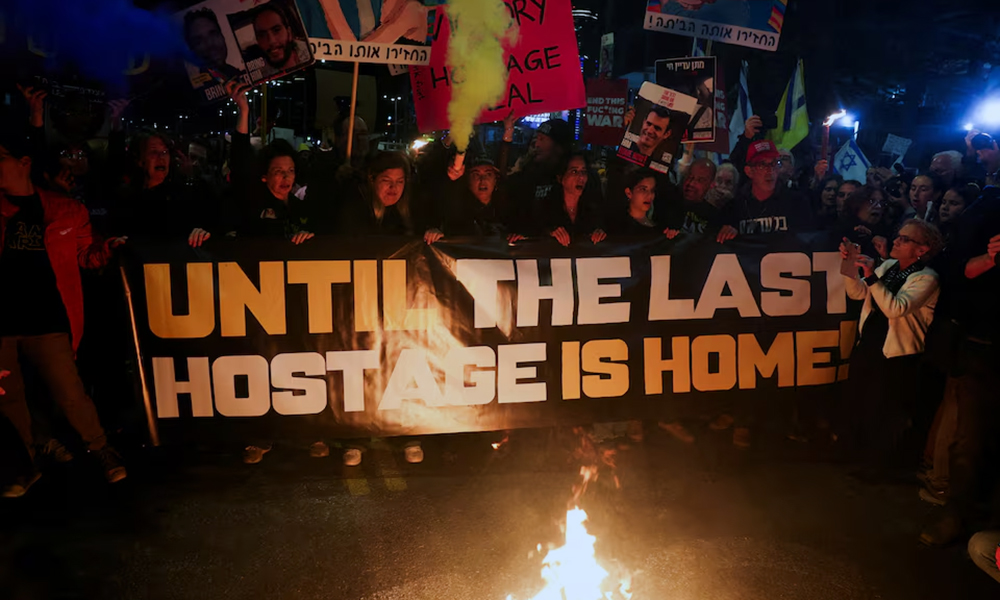
A ceasefire in Gaza between Israel and Hamas is set to come into effect on Sunday morning with a hostage release to follow hours later, opening the way to a possible end to a 15-month war that has upended the Middle East, Reuters reported.
Israeli forces started withdrawing from areas in Gaza's Rafah to the Philadelphi corridor along the border between Egypt and Gaza, pro-Hamas media reported early on Sunday.
The ceasefire agreement followed months of on-off negotiations brokered by Egypt, Qatar and the United States, and came just ahead of the Jan. 20 inauguration of U.S. President-elect Donald Trump.
The three-stage ceasefire will come into effect at 0630 GMT on Sunday.
Its first stage will last six weeks, during which 33 of the remaining 98 hostages - women, children, men over 50, the ill and wounded - will be released in return for almost 2,000 Palestinian prisoners and detainees.
They include 737 male, female and teen-aged prisoners, some of whom are members of militant groups convicted of attacks that killed dozens of Israelis, as well as hundreds of Palestinians from Gaza in detention since the start of the war, read the report.
Three female hostages are expected to be released on Sunday afternoon through the Red Cross, in return for 30 prisoners each.
After Sunday's hostage release, lead U.S. negotiator Brett McGurk said, the accord calls for four more female hostages to be freed after seven days, followed by the release of three further hostages every seven days thereafter.
During the first phase the Israeli army will pull back from some of its positions in Gaza and Palestinians displaced from areas in northern Gaza will be allowed to return.
U.S. President Joe Biden's team worked closely with Trump's Middle East envoy Steve Witkoff to push the deal over the line.
As his inauguration approached, Trump had repeated his demand that a deal be done swiftly, warning repeatedly that there would be "hell to pay" if the hostages were not released.
But what will come next in Gaza remains unclear in the absence of a comprehensive agreement on the postwar future of the enclave, which will require billions of dollars and years of work to rebuild.
And although the stated aim of the ceasefire is to end the war entirely, it could easily unravel.
Hamas, which has controlled Gaza for almost two decades, has survived despite losing its top leadership and thousands of fighters, Reuters reported.
Israel has vowed it will not allow Hamas to return to power and has cleared large stretches of ground inside Gaza, in a step widely seen as a move towards creating a buffer zone that will allow its troops to act freely against threats in the enclave.
In Israel, the return of the hostages may ease some of the public anger against Prime Minister Benjamin Netanyahu and his right-wing government over the Oct. 7 security failure that led to the deadliest single day in the country's history.
But hardliners in his government have already threatened to quit if war on Hamas is not resumed, leaving him pressed between Washington's desire to see the war end, and his far-right political allies at home.
And if war resumes, dozens of hostages could be left behind in Gaza.
Outside Gaza, the war sent shockwaves across the region, triggering a war with the Tehran-backed Lebanese Hezbollah movement and bringing Israel into direct conflict with its arch-foe Iran for the first time, Reuters reported.
More than a year later, the Middle East has been transformed. Iran, which spent billions building up a network of militant groups around Israel, has seen its "Axis of Resistance" wrecked and was unable to inflict more than minimal damage on Israel in two major missile attacks.
Hezbollah, whose huge missile arsenal was once seen as the biggest threat to Israel, has been humbled, with its top leadership killed and most of its missiles and military infrastructure destroyed.
In the aftermath, the decades-long Assad regime in Syria was overturned, removing another major Iranian ally and leaving Israel's military effectively unchallenged in the region.
But on the diplomatic front, Israel has faced outrage and isolation over the death and devastation in Gaza.
Netanyahu faces an International Criminal Court arrest warrant on war crimes allegations and separate accusations of genocide at the International Court of Justice.
Israel has reacted with fury to both cases, rejecting the charges as politically motivated and accusing South Africa, which brought the original ICJ case as well as the countries that have joined it, of antisemitism.
The war was triggered by Hamas' Oct. 7, 2023, attack on southern Israel in which 1,200 people were killed and more than 250 taken hostage, according to Israeli tallies. More than 400 Israeli soldiers have been killed in combat in Gaza since.
Israel's 15-month campaign in Gaza has killed nearly 47,000 Palestinians, according to Gaza health ministry figures, which do not distinguish between fighters and civilians, and left the narrow coastal enclave a wasteland of rubble.
Health officials say most of the dead are civilians. Israel says more than a third are fighters.
-

 Latest News5 days ago
Latest News5 days agoPakistani politician Rehman says his country cannot afford war with Afghanistan
-
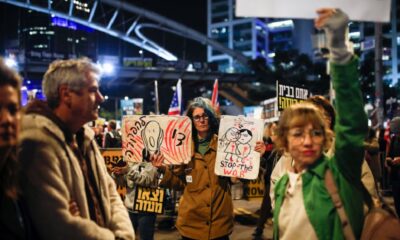
 World5 days ago
World5 days agoIsrael set to approve Gaza ceasefire, hostage deal, Netanyahu’s office says
-

 Latest News5 days ago
Latest News5 days agoBiden: History will reflect that withdrawal from Afghanistan was right thing to do
-

 Regional5 days ago
Regional5 days agoPakistan court sentences ex-PM Imran Khan to 14 years in land graft case
-

 Regional2 days ago
Regional2 days agoHamas frees hostages, Israel releases Palestinian prisoners on day one of ceasefire
-

 Sport5 days ago
Sport5 days agoPollard becomes 2nd cricketer after Gayle to hit over 900 sixes in T20s
-
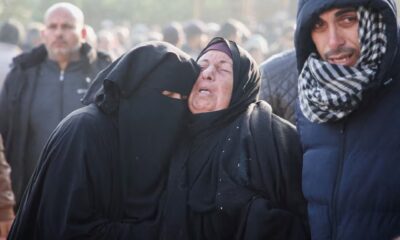
 World4 days ago
World4 days agoIsraeli cabinet approves Gaza ceasefire accord, due to take effect Sunday
-

 Regional5 days ago
Regional5 days agoIraq wants Iran-backed factions to lay down weapons, foreign minister says










